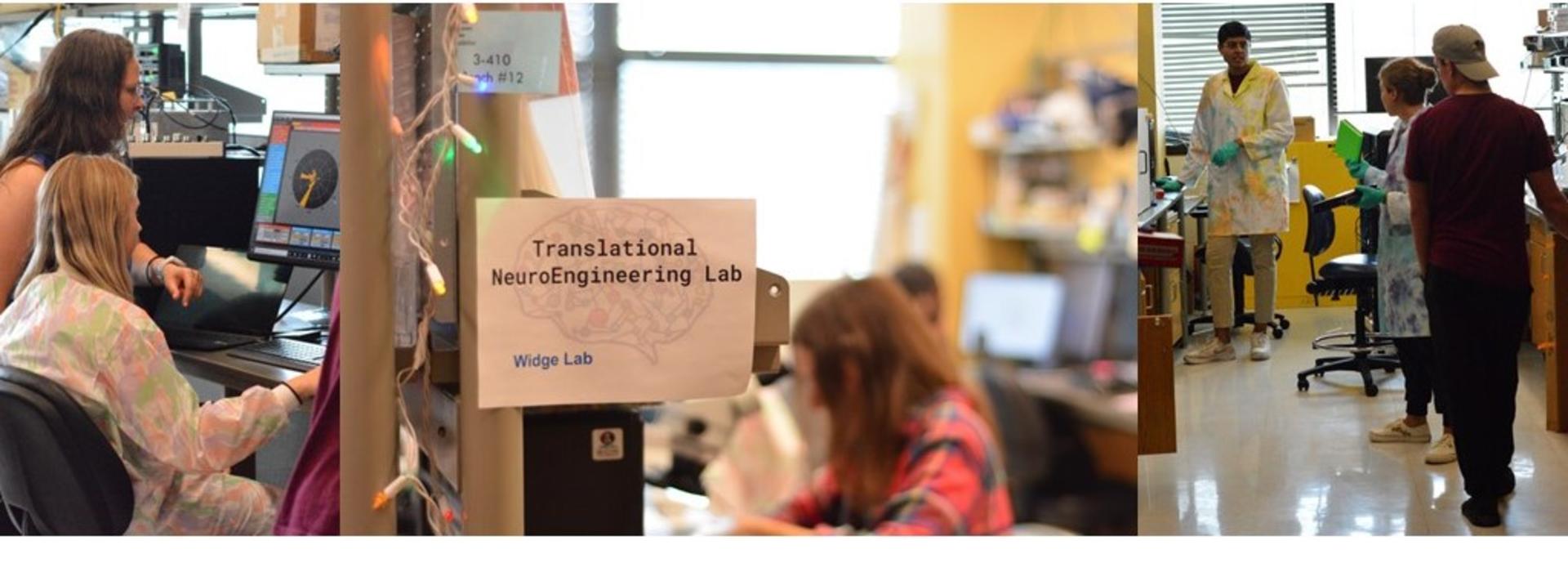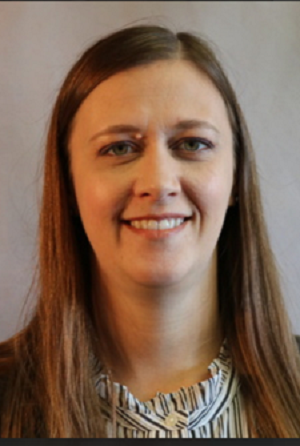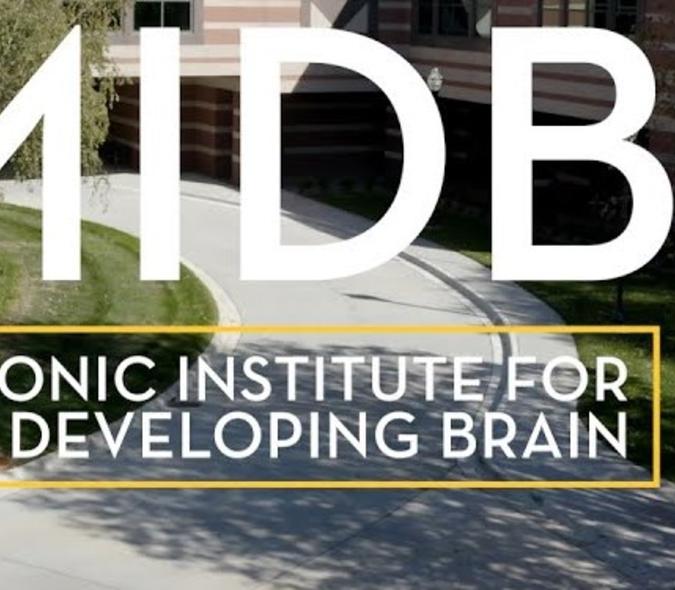
Helping department research labs achieve their goals in the face of strong growth
With more than $14M in grants from the National Institutes of Health alone, research is a differentiating factor for the Department of Psychiatry and Behavioral Sciences and lab managers are on the front lines of that work. Three managers spoke recently about their labs’ overall goals, current investigations, and what ensures that their labs will excel. They include:
- Karrie Fitzpatrick, PhD, who manages the Cognitive Training, Imaging, and Precision Psychiatry (CoTIPP) Lab under the leadership of Department Head Sophia Vinogradov, MD. The lab has been in operation since Vinogradov took over department leadership in 2016
- Brenda Houle, manager of the lab of Assistant Professor Alik Widge, MD, PhD, who transferred his work from Massachusetts General in Boston to the U of M in 2018; and
- Matthew Maple, who manages the Herman Darrow Human Neuroscience Lab under the leadership of Assistant Professor Alexander Herman, MD, PhD; and Assistant Professor David Darrow, MD, MPH (Neurosurgery Department). The lab is one of the newest ones in the department, having started operations in late 2019.
Improving the future

Houle (pictured here) notes that the goal of the Widge Lab is to improve the future of mental health treatments, which could easily be said of each of these labs. “We are building new mechanisms and developing medical devices to manipulate electrical activity in brain circuits and restore normal brain circuit function,” she noted. “We want to enhance the lives of people who are impacted by mental health issues.”
The Vinogradov Lab is dedicated to the design, implementation, and evaluation of neuroscience-informed computerized training exercises that target cognitive deficits associated with psychotic disorders. “We also focus on developing measurement-based psychiatric care methods that are informed by collaborations with colleagues in computational neuroscience to help improve individual decision making,” said Fitzpatrick.
The primary goal of the Herman Darrow lab is to understand how different neurological and psychiatric conditions can affect neural circuits involved in everyday cognitive processes and executive function, according to Maple. “By optimizing neuromodulation and targeting these circuits, our mission is to improve treatments trans-diagnostically across chronic pain, movement disorders, addiction, epilepsy, and depression,” he said.
Involved in the work

Each manager is deeply involved in their lab’s work. Fitzpatrick (pictured here) is currently helping to manage an Early Psychosis Intervention Network (EPINET) R01 grant through the National Institutes of Health. “Our portion is called EPI-MINN,” she said. “This project is part of a national network of clinics striving to expand measurement-based care in early psychosis treatment approaches, including those specifically targeting cognitive dysfunction and motivational impairments.”
Fitzpatrick is also assisting with a collaborative, multi-lab Conte Centers* grant titled, State Representation in Early Psychosis. “This project evaluates our ability to synthesize sensory information to understand our role in the environment,” she explained. The project has four components using similar methods to understand how the brain works. Two measure brain activity and behaviors in humans, the other two use animal models to see how genetic changes and pharmacological interventions modify targeted brain networks and behaviors, according to Fitzpatrick.
Lab goals
The Vinogradov Lab has multiple studies aimed at furthering the understanding of mechanisms and presentation of various mental health conditions, and in particular, psychotic disorders. “Our studies aim to bring measurement-based care approaches to clinical spaces, to both further our understanding of the biological basis of these conditions and to implement approaches that are more objective than subjective in clinical care,” explained Fitzpatrick.
Houle noted that Widge’s lab is currently focused on a suicidality project that involves collaboration with several entities outside the University of Minnesota. Some of the lab’s other projects investigate the impact of deep brain and transcranial magnetic stimulation for the treatment of mental health issues. “We also have a rodent laboratory, where the major themes involve control of brain network connectivity and understanding the neural basis of cognitive flexibility,” she said.
Including everyone
Widge Lab projects function independently but also work together, Houle added. “Efforts are continuously made to include all lab team members in developing all of our projects,” she said. “We emphasize publication and giving presentations and expect that everyone will add value.”

Maple (pictured here) noted that the Herman Darrow lab team strives to achieve their goals by not only strengthening teamwork within, but also networking with other departments at the U and at other universities. They also collaborate with private industry. “Brilliant people can be found in all sorts of places, and of course, so can great opportunities for funding,” he explained. “By doing our best work on our studies, we hope to be able to expand our reach to help as many people as possible, all while increasing scientific knowledge and advancing the technology that makes our research possible.”
The lab's primary projects involve chronic pain and depression, and how those conditions affect a person's cognitive flexibility, effort, and decision making when they perform various tasks, according to Maple. “Our methods include noninvasively measuring peoples' brain activity with electroencephalograph [EEG] head caps,” he explained. “We take similar measurements from epilepsy patients using electrodes implanted directly in or on the brain to identify where seizure activity is happening.”
Solid foundation
Each of these labs build on a solid foundation of sound practices. “The most important practice that enables our lab to excel is open, honest, and prompt communication,” said Maple. “It's essential that everyone involved in a study, from participants to coordinators to PIs all understand what is going on. This becomes especially important for our studies that involve patients getting any sort of surgical or neuromodulation intervention, because they usually have a quick turnaround time between when they go into the operating room and when we need to start collecting data from them.”
Maple adds that for studies with a lot of participants, clear communication is critical because many different schedules need to be coordinated. “We maintain lab-wide communication by having weekly meetings that enable as many people as possible to give updates, ask questions, or provide answers,” he said.
Standard operating practices
Fitzpatrick agrees with the need for clear communication. “Our core lab membership has more than doubled in size over the past three years, and our collaborator network has grown much more than that,” she said. “To support that growth, we’ve needed good communication and support from Dr. Vinogradov, as well as effective distribution of responsibilities across a managerial group that meets regularly.” The team also put standard operating procedures in place throughout the lab and ensures that the procedures are clearly understood and updated as needed.
For Houle, the bottom line for lab excellence is to recruit those who share a belief in the mission and have a passion for the work. “Emphasize creating a cohesive environment and acknowledge the value of each team member,” she said. “Prioritize building strong professional relationships and mutual respect.”
Learn more about the labs:
CoTIPP Lab (Vinogradov)
TNE Lab (Widge)
Herman Darrow Human Neuroscience Lab
*The National Institutes of Health Conte Centers program is intended to support interdisciplinary basic neuroscience or translational research that demonstrates an extraordinary level of synergy, integration, and potential for advancing the state of the field.



